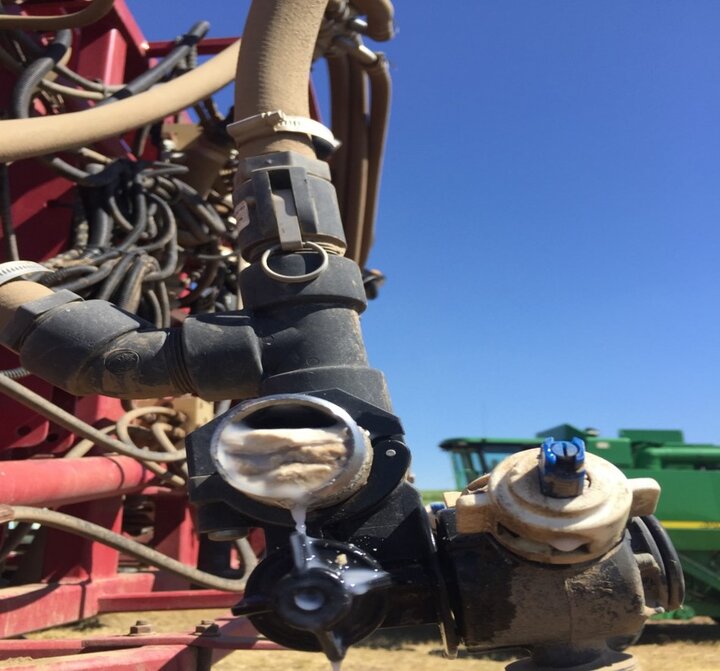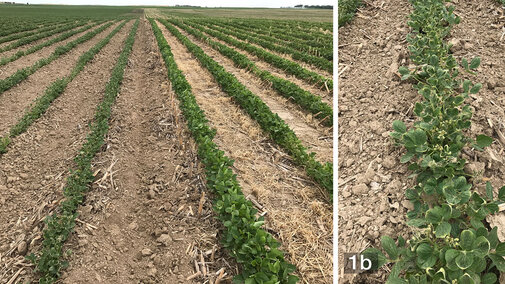Dicamba-resistant soybean, known as Roundup Ready 2 Xtend Soybean, was made commercially available in the 2017 growing season. This new soybean cultivar is genetically engineered to provide resistance to dicamba and glyphosate. XtendiMax, Engenia and FeXapan are commercially available dicamba formulations labeled for application in Roundup Ready 2 Xtend Soybean. They can be applied any time before planting Roundup Ready 2 Xtend soybean (burndown application) up to R1 (beginning of flowering) growth stage. All three products are specifically designed to reduce off-target movement; however, phenoxy group herbicides are volatile (can move off-target after herbicide application) and several broadleaf crops are sensitive to phenoxy herbicides. These products have a number of application requirements, such as use of specific nozzles, adjuvants, or downwind buffer requirements to reduce off-target movement. (Please check product label for details.)
On an important note, already this summer dicamba has caused injuries to sensitive crops in Arkansas, which created a need to revisit this new technology. By June 20 the Arkansas Agriculture Department (AAD) had received 141 dicamba misuse complaints. In our state, it is estimated that Roundup Ready 2 Xtend Soybean were planted on approximately 500,000 acres this growing season. It is likely that many of those fields will be sprayed post-emergence with one of those three dicamba products.
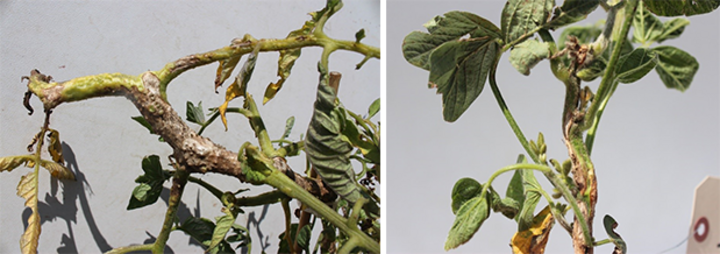
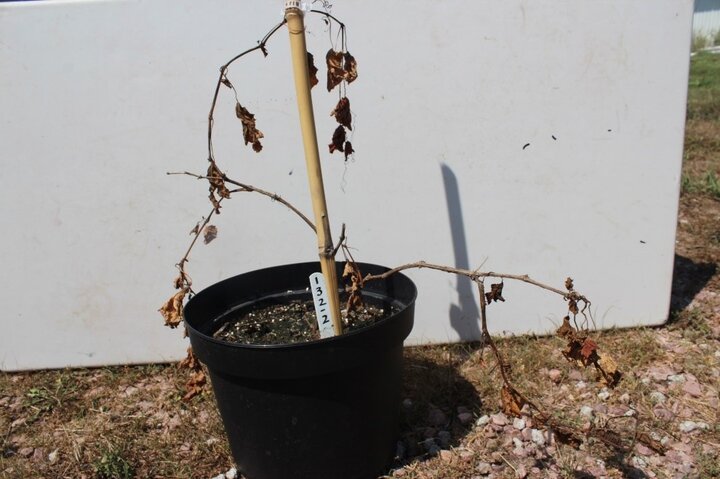
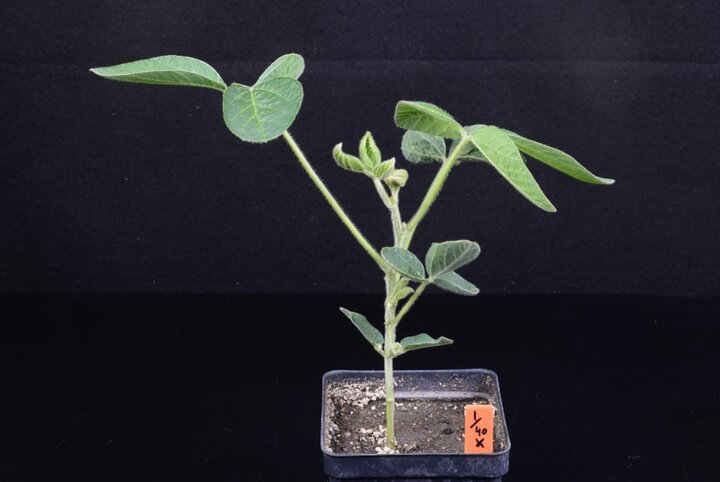
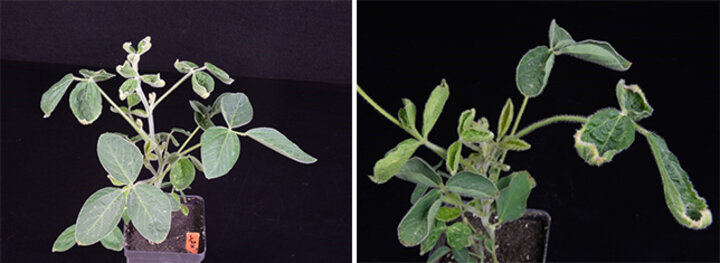
Figure 6. Younger leaf cupping two weeks after dicamba application.
Identifying Dicamba Injury
Several dicamba-sensitive crops are planted in Nebraska. In fact, all non-dicamba tolerant soybeans (e.g., Roundup-Ready, Liberty-Link or conventional) are very sensitive to off-target movement of dicamba applied in Roundup Ready 2 Xtend Soybean.
It is important to be familiar with dicamba injury symptoms. Figures 1-6 show dicamba injury to several sensitive crops that may help growers and crop consultants identify injury symptoms. Injury symptoms shown in Figures 2-6 are from simulated drift studies where dicamba was applied at reduced rates (Knezevic et al. 2016).
Our preliminary results (Knezevic et al. 2016) suggested that all three types of non-dicamba soybeans were very sensitive to ultra-low rates of dicamba. Injuries ranged from 70% to 100% from an application of 1/10 (1.6 oz/ac) of the recommended rate and 20%-60% for 1/100 (0.16 oz/ac) of the rate, as well as 20%-50% from 1/500 (0.032 oz/ac) rate, all applied at the V2 stage of Roundup-Ready soybeans. These results reinforce the need for use of proper herbicide application procedures and sprayer cleaning in order to reduce dicamba’s off-target movement.
Reference
Knezevic, Stevan Z.; Maxwel Oliveira, and Jon Scott. Effects of dicamba micro rates on sensitive crops. North Central Weed Science Society, 2016.
Resources
- XtendiMax application requirements
- Engenia application requirements
- Fexapan application requirements
